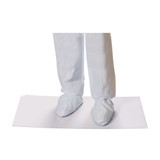Research on sleep inertia – the state you are in when you first wake up – by UniSA's Centre for Sleep Research PhD candidate Cassie Hilditch has particular relevance for nightshift workers in safety-critical industries such as health care, who have to return from breaks and operate at full capacity.
"Sleep inertia is the groggy feeling most people experience when waking up, and is characterised by slow reaction times, poor decision-making and reduced information processing," Hilditch says.
"This doesn't matter for people getting dressed in the morning, but for workers in industries such as … health, post-nap alertness is critical for workplace safety."
Hilditch's study found a 30-minute nap during a night shift produced long-lasting sleep inertia, with recovery times of up to 45 minutes.
A 10-minute nap during a nightshift, however, can help stabilise performance during the hour after waking, with little-to-no sleep inertia.
Hilditch says her research shows the importance of workers allowing time between a nap and the recommencement of work.
"Our research suggests that if you have a 30-minute break in a shift at night, it's better to take a 10-minute nap at the start of your break. Don't take a 30-minute nap if you need to return to work straight away," Hilditch says.
"Our participants were well-rested before the study, so these are likely to be best-case figures, as shift workers may already have cumulative fatigue which could prolong recovery from sleep inertia. In the real world, people are carrying a lot of sleep debt."
Recognising limitations
Cognitive tests also revealed participants tended to overestimate their abilities after a nap, with the gap between perception and reality producing further risk.
"If sleep inertia persists beyond your break, and you think you're more alert than you actually are … then there is a clear safety risk," Hilditch says.
"One of the challenges is getting people to recognise their limitations. Shift workers might think that since they've been doing shift work for six years they are fine, but they might not be – many studies support this."










